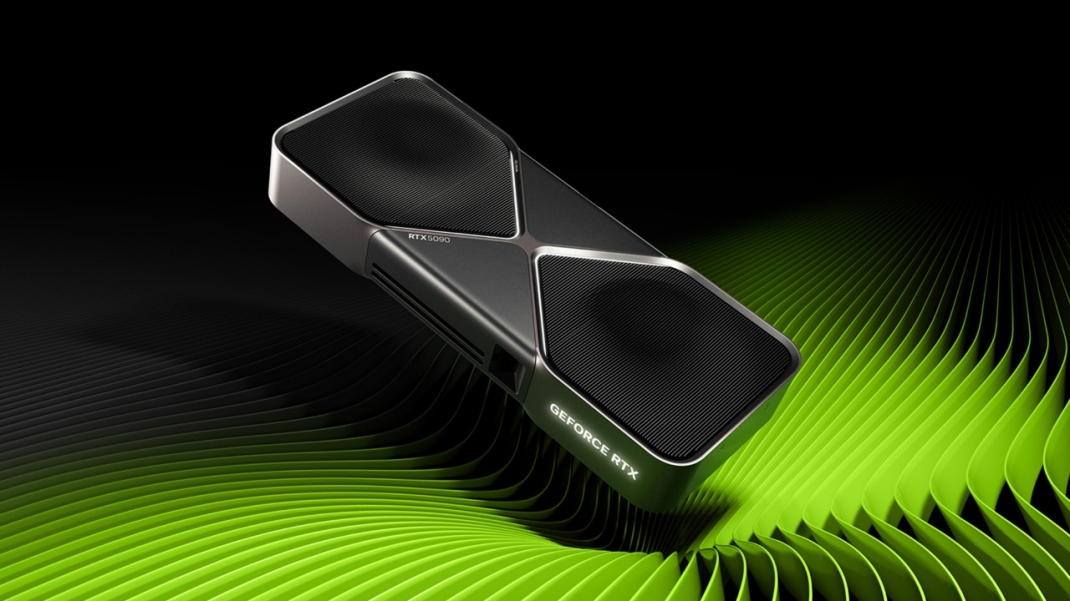GeForce NOW Summer Deal vs. GPU Upgrade: Smart Play for RTX 2000 Owners in the UK & EU?
By mid-2025, owners of NVIDIA’s GeForce RTX 2000 series graphics cards find themselves at a technological crossroads. Launched between 2018 and 2019, these GPUs, including popular models like the RTX 2070 Super, RTX 2080, and the formidable RTX 2080 Ti, were pioneers, bringing real-time ray tracing and AI-powered DLSS to the mainstream. However, the relentless march of gaming technology means that these once-mighty cards are now several generations old. Gamers are increasingly feeling the performance pinch in the latest, most demanding titles, particularly when targeting higher resolutions such as 1440p or the coveted 4K.
This situation presents a common dilemma: undertake a significant financial investment in a new, more powerful graphics card, or explore alternative solutions to bridge the performance gap and potentially delay a costly hardware overhaul. The traditional path involves upgrading to a newer GPU, likely from NVIDIA’s own RTX 40-series or looking ahead to the nascent RTX 50-series. Concurrently, cloud gaming services have matured significantly, with NVIDIA’s GeForce NOW (GFN) emerging as a strong contender. GFN distinguishes itself with a “play your own games” model, allowing users to stream titles they already possess on platforms like Steam or the Epic Games Store. Adding another layer to this decision is NVIDIA’s “Summer 2025” promotional offer for GeForce NOW, presenting a timely and potentially cost-effective route to enhanced gaming.
The choice confronting RTX 2000-series owners isn’t merely about achieving higher frame rates. It reflects a broader shift in how gamers access and experience their favorite titles. The rise of robust cloud gaming services introduces a new paradigm, moving away from sole reliance on local hardware capabilities. This shift brings new variables into the cost-benefit analysis, such as internet dependency and subscription models, altering the traditional upgrade calculus. The increasing viability of services like GeForce NOW, especially when paired with attractive promotional offers, may subtly influence GPU market upgrade cycles and consumer expectations, particularly for users who might have previously opted for mid-range hardware. If a substantial segment of gamers can achieve satisfactory performance through the cloud at a fraction of the cost of a new GPU, they might delay physical upgrades or opt for less powerful local hardware, reserving cloud services for their most demanding gaming needs. This evolving landscape makes the decision more nuanced than ever.
Decoding GeForce NOW: Your Games, Anywhere, Anytime
NVIDIA’s GeForce NOW operates on a straightforward yet powerful premise: it provides users with access to high-performance virtual gaming rigs hosted in the cloud. Gameplay is streamed in real-time from these NVIDIA-powered servers directly to a user’s existing devices, which can range from traditional desktop PCs and Macs to Chromebooks, mobile phones, tablets, and even smart TVs. The fundamental appeal, and a significant differentiator from some competing cloud services, is that GeForce NOW allows users to play games they already own from major digital storefronts such as Steam, the Epic Games Store, and Ubisoft Connect, alongside a wide selection of popular free-to-play titles. This model respects a gamer’s existing investment in their digital library. With a supported library boasting over 2000 games, including more than 100 free-to-play options, the service offers extensive choice.
GeForce NOW offers several membership tiers, each catering to different needs and budgets:
- Free Tier: This provides a basic entry point to experience the service. Users get access to a “Basic rig,” can play for up to 1-hour per session, and typically experience the longest queue times before starting a game.
- Performance Tier: Previously known as the “Priority” tier , this is the focus of the Summer 2025 offer. It grants access to a “Premium rig” equipped with RTX capabilities, enabling features like ray tracing and DLSS in supported games. Users can stream at resolutions up to 1440p (QHD) and at frame rates up to 120 FPS, depending on the specific game and the user’s device. This tier also supports ultrawide monitor resolutions and offers longer gaming sessions of up to 6 hours.
- Ultimate Tier: This is NVIDIA’s top-tier offering, providing access to an “RTX 4080 rig.” While marketed as providing RTX 4080-level performance, the underlying hardware is often a more powerful server-grade GPU, such as an NVIDIA L40 or similar, sometimes featuring specifications like 24GB of VRAM, which exceeds that of a consumer RTX 4080. This tier supports streaming up to 4K resolution at 120 FPS (and even up to 240 FPS in Reflex mode on the native PC app), High Dynamic Range (HDR), Cloud G-SYNC for compatible displays, and the latest NVIDIA technologies like DLSS 3 and Reflex. Session lengths extend up to 8 hours.
The following table summarizes the key features and standard pricing for the paid GeForce NOW tiers in mid-2025:
Table 1: GeForce NOW Membership Tiers at a Glance (Mid-2025)
| Tier Name | Key Rig Specs | Max Resolution & FPS | Session Length | RTX Features (RT, DLSS) | NVIDIA Reflex | Standard UK Price (Monthly / 6-Month) | Standard EU Price (Monthly / 6-Month) |
|---|---|---|---|---|---|---|---|
| Performance | Premium Rig, RTX On | Up to 1440p @ 120 FPS | Up to 6 hours | Yes | Yes | £9.99 / £49.99 | €10.99 / €54.99 |
| Ultimate | RTX 4080-Class | Up to 4K @ 120 FPS (240 FPS PC) | Up to 8 hours | Yes (incl. DLSS 3) | Yes | £19.99 / £99.99 | €21.99 / €109.00 |
To effectively use GeForce NOW, certain requirements must be met, with internet connectivity being paramount. NVIDIA specifies varying bandwidth needs based on the desired streaming quality:
- 15 Mbps for 720p at 60 FPS
- 25 Mbps for 1080p at 60 FPS
- 35 Mbps for 1440p (QHD) or ultrawide QHD at 120 FPS
- 45 Mbps for 4K at 120 FPS
A stable, low-latency connection is crucial. NVIDIA strongly recommends a hardwired Ethernet connection or, at minimum, a robust 5 GHz Wi-Fi network. Network latency to the nearest NVIDIA data center should ideally be below 80ms, with sub-40ms (and even sub-30ms) being preferable for a responsive gaming experience.
Device compatibility is broad, encompassing Windows PCs, macOS systems, ChromeOS devices, many web browsers, Android phones and tablets, iPhones and iPads, NVIDIA SHIELD TV, and select smart TVs from manufacturers like Samsung and LG. The local hardware requirements are minimal; for instance, a Windows PC needs only a 64-bit version of Windows 10 or later, a dual-core CPU (x86 or x64 at 2.0GHz or faster), 4GB of system memory, and a GPU supporting DirectX 11 or later. This low barrier to entry is significant. It effectively democratizes access to high-end PC gaming experiences, allowing individuals with older or less powerful local hardware to enjoy graphically intensive games at high settings. This capability can extend the usable lifespan of existing computers and even enable high-fidelity gaming on devices not traditionally designed for such demanding tasks, like many laptops, Macs, or Chromebooks when it comes to AAA PC titles. This, in turn, has positive implications for reducing electronic waste and making cutting-edge gaming more accessible to a wider audience who might not have the budget for, or desire to own, a dedicated high-end gaming PC.
The “play your own games” model is a cornerstone of GeForce NOW’s value. Gamers often amass substantial digital libraries over years of purchases on platforms like Steam, the Epic Games Store, or Ubisoft Connect. Unlike some cloud gaming services that operate with their own proprietary stores or offer a limited, curated subscription library, GeForce NOW integrates with these existing ecosystems. This means users typically do not need to repurchase games to play them in the cloud, nor do they lose access if they stop subscribing to GFN (they still own the game on the original store). This approach significantly reduces any perceived “switching cost” in terms of game access and respects the financial and emotional investment gamers have in their collections.
Spotlight: The GeForce NOW Summer 2025 “Performance” Power-Up
NVIDIA is looking to entice gamers this summer with a notable promotion for its GeForce NOW service. The “Sale Into Summer” deal offers a 40% discount on new six-month “Performance” memberships. This offer is slated to run for a limited period, concluding on Sunday, July 6th, 2025, and is available on a “first come, first served” basis, which may imply that NVIDIA has a certain capacity allocated for this promotion.
The “Performance” tier itself represents an evolution of the previous “Priority” tier, incorporating several enhancements. Key among these are the ability to stream games at up to 1440p (QHD) resolution and support for ultrawide monitor aspect ratios, features previously exclusive to the more expensive Ultimate tier. Performance members also benefit from access to NVIDIA’s RTX technologies, including real-time ray tracing and DLSS in supported titles, and can enjoy gaming sessions of up to six hours. An added convenience is the ability for users to save their in-game graphics settings, ensuring a consistent experience across sessions.
Calculating the discounted price for this summer offer:
- United Kingdom (UK): The standard price for a six-month Performance (formerly Priority) membership is £49.99. A 40% discount reduces this by £19.996, bringing the promotional price to approximately £29.99 for six months.
- European Union (EU): The standard six-month Performance (Priority) membership costs €54.99. Applying the 40% discount (a reduction of €21.996) results in a promotional price of approximately €32.99 for the six-month period.
This summer deal undeniably lowers the financial barrier to entry for 1440p cloud gaming through GeForce NOW for a half-year duration. However, a critical aspect of this offer, and for all new Performance and Ultimate tier sign-ups from January 1, 2025, is the introduction of playtime limits. New subscribers to these tiers will be subject to a 100-hour maximum playtime per month. While this is a substantial amount of gaming for many (averaging over 3 hours per day), it marks a departure from the previously “unlimited” nature that many associated with GFN’s paid tiers. To add some flexibility, any unused playtime up to 15 hours can roll over to the subsequent month. It’s important to note that existing members who subscribed before January 1, 2025, will retain their unlimited playtime benefits until January 1, 2026. Furthermore, “Founders” members (an early adopter tier no longer available) continue to enjoy unlimited playtime for life, provided their membership does not lapse.
This introduction of a playtime cap, even with the attractive summer discount, fundamentally alters the value proposition for new users. It positions GeForce NOW more as a “generous but metered” service. This change could be a strategic move by NVIDIA to manage server load more effectively as they roll out higher-resolution streaming options, which inherently consume more resources. It might also serve to segment the user base, with extremely heavy users potentially finding the cap restrictive and perhaps being nudged towards different solutions or accepting the limit. The “first come, first served” language of the summer promotion, combined with these new playtime restrictions, suggests that NVIDIA is actively balancing server capacity with user demand. While cloud infrastructure is designed for scalability, it is not infinite, and high-performance gaming servers are a significant operational cost. Promotional offers like this summer deal could be strategic tools to attract users during periods of available capacity, to test price elasticity for certain feature sets, or to gauge user adoption before implementing broader changes to their service structure or pricing.
The RTX 2000 Upgrade Dilemma: Costs and Gains of New Silicon
NVIDIA’s RTX 2000-series graphics cards, including the RTX 2070 Super, RTX 2080, and RTX 2080 Ti, left a significant mark on the PC gaming landscape by popularizing real-time ray tracing and Deep Learning Super Sampling (DLSS). However, by mid-2025, these GPUs are undeniably showing their age when confronted with the latest AAA titles, especially at demanding resolutions like 1440p and 4K, and with advanced ray tracing effects enabled. For owners of these cards, the prospect of upgrading to newer silicon promises a substantial leap in performance. For instance, an RTX 4070 Super can deliver well over 50% more frames per second than an RTX 2070 Super in many scenarios. Similarly, moving from an RTX 2080 Ti to an RTX 4070 Ti Super or an RTX 4080 Super translates to a very significant performance uplift, as indicated by synthetic benchmarks (e.g., G3D Mark scores showing the RTX 4070 Ti SUPER around 31,745 versus the RTX 2080 Ti’s 21,581 , and the RTX 4080 SUPER around 34,261 versus the RTX 2080 Ti’s 21,584 ).
For those considering a GPU upgrade in mid-2025, the NVIDIA RTX 40-series represents the most current and readily available generation for a meaningful performance boost. While the next-generation RTX 5000 series is anticipated, its mainstream availability, full product stack, and pricing remain largely speculative for this timeframe, with initial high-end models likely carrying premium price tags. Thus, the RTX 40-series offers a more predictable upgrade path.
Key GPU upgrade targets from an RTX 2000-series card include:
- Mid-Range Powerhouse (RTX 4070 Super): An excellent choice for 1440p gaming, offering a very significant uplift from an RTX 2070 Super or RTX 2080.
- Typical UK Price: Approximately £550 – £650.
- Typical EU Price: Approximately €590 – €700.
- High-Performance (RTX 4070 Ti Super): Ideal for high refresh rate 1440p gaming or as an entry point for 4K. This card provides a substantial jump from an RTX 2080 or RTX 2080 Ti.
- Typical UK Price: Approximately £770 – £900.
- Typical EU Price: Approximately €840 – €950.
- Enthusiast Tier (RTX 4080 Super): Aimed at strong 4K performance, this card is a relevant comparison point for GeForce NOW’s Ultimate tier.
- Typical UK Price: Approximately £950 – £1100+.
- Typical EU Price: Approximately €1080 – €1300+. (Note: GPU prices are subject to market fluctuations; these are estimates based on available data for May 2025.)
The following table provides a snapshot of these upgrade options:
Table 2: GPU Upgrade Options – Cost & Performance Snapshot (vs. RTX 2000 Series)
| Target New GPU | Typical UK Price (£) | Typical EU Price (€) | Est. Perf. Uplift vs. RTX 2070 Super (1440p) | Est. Perf. Uplift vs. RTX 2080 Ti (1440p/4K) | Key Features (VRAM, DLSS) |
|---|---|---|---|---|---|
| RTX 4070 Super | £550 – £650 | €590 – €700 | ~70-100%+ | ~30-50%+ | 12GB GDDR6X, DLSS 3 |
| RTX 4070 Ti Super | £770 – £900 | €840 – €950 | ~100-130%+ | ~45-65%+ | 16GB GDDR6X, DLSS 3 |
| RTX 4080 Super | £950 – £1100+ | €1080 – €1300+ | ~130-160%+ | ~55-80%+ | 16GB GDDR6X, DLSS 3 |
Performance uplift estimates are generalized from various benchmarks and reviews ; actual gains vary by game, settings, and system configuration.
Beyond the cost of the GPU itself, prospective upgraders must consider other potential expenses and system limitations. A more powerful graphics card often draws more power, potentially necessitating a Power Supply Unit (PSU) upgrade if the existing unit lacks sufficient wattage or the correct power connectors. Furthermore, pairing a significantly faster GPU with an older CPU—perhaps one from the same era as the RTX 2000-series launch—can lead to a CPU bottleneck. This scenario would prevent the new GPU from reaching its full performance potential, possibly requiring a more comprehensive upgrade of the CPU, motherboard, and RAM, further increasing the total investment. Finally, case compatibility is a practical concern, as newer high-performance GPUs can be physically larger than their predecessors.
Upgrading a graphics card offers a tangible and immediate boost in local gaming performance. However, this comes with a considerable upfront financial commitment and the possibility of cascading upgrade requirements for other system components. For many RTX 2000-series owners, particularly those targeting 1440p resolution, the “sweet spot” for an upgrade in mid-2025 likely resides in the RTX 4070 Super or RTX 4070 Ti Super range. These cards offer a compelling balance of performance uplift and cost. The RTX 4080 Super, while immensely powerful, represents a higher tier of investment, more directly comparable in performance aspirations to GeForce NOW’s Ultimate subscription.
The GPU market in 2025, even for the established RTX 40-series, continues to reflect a higher baseline price point than many gamers were accustomed to before the disruptions of the pandemic and cryptocurrency mining booms. While some models, like the RTX 40 SUPER series, have seen prices dip below their initial MSRP in certain regions , the overall cost for a high-performance graphics card remains substantial. This elevated cost structure inherently makes subscription-based services like GeForce NOW, especially when accompanied by promotional offers, appear more attractive as short-to-medium-term solutions. This is particularly true for gamers hesitant to commit significant capital to a rapidly evolving hardware landscape, especially with the anticipation of the RTX 5000-series GPUs on the horizon , which could make a current high-end RTX 40-series purchase feel less “future-proof” relative to its cost.
Value Showdown: GeForce NOW Summer Deal vs. Buying a New GPU
When weighing the GeForce NOW Summer 2025 Performance deal against purchasing a new GPU, several factors come into play, including cost, performance, game access, and overall convenience.
Cost Analysis (UK & EU Focus):
- Short-Term (6 Months):
- The GeForce NOW Performance Summer Deal is exceptionally compelling from a purely short-term cost perspective. For approximately £29.99 in the UK or €32.99 in the EU, users gain six months of access to 1440p-capable cloud gaming.
- In stark contrast, purchasing a new GPU like an RTX 4070 Super involves an upfront cost of roughly £550-£650 or €590-€700.
- For gamers whose primary concern is immediate budget, GeForce NOW wins this initial comparison decisively.
- Medium-Term (1-2 Years):
- After the initial 6-month promotional period, the standard GeForce NOW Performance tier (6-month plan) costs £49.99 / €54.99 every six months. This translates to approximately £100 / €110 per year. Over two years, the cost would be around £200 / €220.
- The GeForce NOW Ultimate tier (6-month plan) costs £99.99 / €109.00 every six months. This amounts to roughly £200 / €218 per year, or £400 / €436 over two years.
- A £600 GPU, if its cost is amortized, equates to £300 per year over two years or £200 per year over three years. This calculation doesn’t include electricity costs (which can be higher for powerful local GPUs), the potential resale value of the GPU, or costs for other necessary system upgrades (PSU, CPU).
- Over one to two years, GeForce NOW generally remains the cheaper option in terms of direct outlay compared to buying a new mid-to-high-end GPU. However, the GPU is an owned asset that retains some value and offers unrestricted local use.
- The 100-Hour/Month Cap Consideration: For new subscribers taking advantage of the summer deal or signing up for Performance/Ultimate tiers from January 1, 2025, the 100-hour monthly playtime limit is a crucial factor. While this allows for over three hours of gaming per day on average, users who consistently exceed this threshold may find the value of the subscription diminished or feel constrained.
Performance & Experience:
- GFN Performance (1440p) vs. Local Mid-Range GPU (e.g., RTX 4070 Super):
- The GFN Performance tier aims for up to 1440p resolution at up to 120 FPS, utilizing a “Premium Rig with RTX On”. The exact specifications of this rig are not detailed as being equivalent to a specific consumer card, but user reports suggest that in some demanding titles, particularly those that are CPU-intensive or feature maxed-out ray tracing, performance on this tier (formerly Priority) might struggle even at 1080p, hinting that the underlying cloud hardware might be closer to a previous-generation high-end card or a current-generation mid-tier card.
- A local RTX 4070 Super, on the other hand, will consistently deliver robust 1440p performance, frequently surpassing 100 FPS in many contemporary games, with the inherent advantages of no streaming-induced latency or visual compression artifacts.
- GFN Ultimate (4K, “RTX 4080-Class”) vs. Local High-End GPU (e.g., RTX 4080 Super):
- GFN Ultimate leverages powerful server-grade GPUs, sometimes with specifications (like 24GB VRAM on an L40 GPU) that differ from consumer RTX 4080s but are marketed to provide equivalent or better performance. In GPU-bound scenarios, GFN Ultimate can indeed match or even occasionally exceed the performance of a local RTX 4080. However, in CPU-intensive games or scenes, the performance might be limited by the server’s CPU, which may not match a high-end consumer desktop CPU.
- A common observation with cloud gaming, even at 4K, is that the image quality can appear “a bit soft” due to the necessary video compression and decompression involved in streaming.
- A local RTX 4080 Super offers an uncompromised visual experience with maximum sharpness and responsiveness, free from streaming artifacts.
- Latency:
- Latency is often cited as a primary concern for cloud gaming. The responsiveness of GeForce NOW is contingent on the user’s geographical proximity to NVIDIA’s data centers, the quality and speed of their internet connection, and their home network setup. NVIDIA Reflex technology is implemented on GFN to help mitigate this latency.
- User experiences with GFN latency vary. Some Ultimate tier users report a smooth and responsive experience, though some note that even at high streamed frame rates (e.g., 120 FPS), the “feel” can be closer to a lower native frame rate (e.g., 60 FPS). Others, particularly in fast-paced competitive games, find the latency noticeable. Measured client-to-server latency on GFN can be in the range of 15-20ms, to which the local display pipeline and game processing time must be added.
- A local GPU setup offers minimal input latency, primarily dictated by the game engine, the display’s response time, and peripheral input lag.
Game Access & Ownership:
- GFN Strength: A major advantage of GeForce NOW is its “play your own games” model. Users can access titles they already own on Steam, Epic Games Store, Ubisoft Connect, and other supported platforms. This leverages existing game libraries without requiring repurchases. The service supports over 2000 games.
- GFN Limitation: Despite the large library, not every PC game is available on GeForce NOW. Publishers have control over which of their games are opted into the service, and titles can occasionally be added or removed. Users must verify if their specific must-play games are supported by checking the official GFN games list.
- Local GPU Strength: With a local GPU, users can play any game their PC can run, without restriction from a third-party service. This also includes comprehensive support for game modifications (mods), which is often limited or entirely unavailable on cloud gaming platforms.
Flexibility & Convenience:
- GFN: Offers unparalleled flexibility to play demanding PC games across a wide array of devices, including low-specification laptops, Macs, tablets, or even smartphones, all while enjoying high graphical settings. Users are also freed from concerns about local hardware obsolescence, manual driver updates, or managing game installations and patches, as these are handled by NVIDIA on the cloud servers.
- Local GPU: Performance is tied to a single physical PC. The user is responsible for all hardware maintenance, driver updates, game installations, and eventual hardware upgrades.
Data Usage (GFN):
- Data consumption can be a significant factor for users with internet data caps.
- Streaming at 4K resolution and 120 FPS on the Ultimate tier can consume approximately 45 Mbps, potentially using up to 16GB of data per hour.
- The default “Balanced” setting for GFN Ultimate, also supporting 4K 120 FPS, is cited as using around 16GB per hour.
- Streaming at 1080p and 60 FPS (a common target for the Performance tier) requires around 25 Mbps.
- NVIDIA offers a “Data Saver” mode that reduces consumption to about 4GB per hour by streaming at 720p and 60 FPS.
The comparison between GeForce NOW and a local GPU upgrade is not just a matter of numbers; it reflects differing priorities. GFN offers significantly lower upfront costs and remarkable multi-device flexibility, making high-end gaming accessible without expensive local hardware. A GPU upgrade, while costly, provides the most consistent, uncompromised local performance and complete game compatibility.
The true “value” of GeForce NOW, therefore, is intrinsically linked to a user’s specific circumstances, particularly their internet quality and gaming habits. For an individual with a high-speed, stable, and unlimited internet connection who plays a moderate number of hours per month (e.g., comfortably within the 100-hour cap for new subscribers), GeForce NOW, especially with the summer promotional deal, can be an exceptionally cost-effective way to access high-fidelity gaming. Conversely, for someone with unreliable or slow internet, or a gamer who plays extensively beyond the monthly cap, a local GPU upgrade remains the superior choice, despite the higher initial investment.
This decision also touches upon a broader shift in gaming philosophy: the rise of “Gaming as a Service” versus the traditional “Gaming as an Owned Hardware Experience.” GeForce NOW abstracts the hardware component, focusing on providing access to gaming power. Local GPUs, and the PCs built around them, emphasize ownership, granular control, and often, the hobbyist aspect of PC building and tuning. The “better value” thus depends on what an individual gamer values more: the convenience and low commitment of an access-based service, or the long-term capability and control of an owned physical asset.
The Verdict: Who Should Grab the GeForce NOW Deal, and Who Should Upgrade?
Navigating the choice between subscribing to GeForce NOW with its Summer 2025 Performance deal and investing in a new graphics card requires a personalized assessment. Here are some profiles to help guide RTX 2000-series owners:
- Profile 1: The Budget-Conscious RTX 2000 Owner Eyeing 1440p
- Recommendation: Strongly consider the GeForce NOW Summer Performance deal.
- Rationale: For a modest outlay of approximately £30 (UK) or €33 (EU), this provides six months of 1440p-capable cloud gaming. This is a fraction of the cost of an RTX 4070 Super, which typically retails for £550+ / €590+. It’s an excellent, low-risk opportunity to experience higher fidelity gaming on their existing RTX 2000-era system or even on less powerful secondary devices without a substantial upfront investment. The 100-hour monthly playtime cap for new subscribers is likely to be sufficient for many gamers in this category who balance gaming with other commitments.
- Profile 2: The Gamer with an RTX 2070 Super/2080 Wanting a Significant, Lasting Upgrade
- Recommendation: Lean towards a GPU upgrade, such as an RTX 4070 Super or RTX 4070 Ti Super, if the budget accommodates the approximate £550-£900 / €590-€950 investment.
- Rationale: The performance improvement from an RTX 2070 Super or RTX 2080 to an RTX 4070 Super or RTX 4070 Ti Super is substantial and immediately tangible in local gameplay. This path offers a long-term, local solution that is independent of internet quality and free from streaming compromises like latency or compression. For these users, the GeForce NOW Performance tier might feel like a more modest upgrade or even a side-grade in terms of raw processing power compared to what a new dedicated GPU in this class can deliver, especially if their existing CPU is reasonably modern and capable.
- Profile 3: The RTX 2080 Ti Owner Seeking Top-Tier 4K Performance
- Recommendation: This presents a more complex decision.
- Option A (GeForce NOW Ultimate): If budget is a primary constraint, or if the gamer wishes to delay a major investment of £1000+ / €1100+ in an RTX 4080 Super , subscribing to GeForce NOW Ultimate (standard pricing £19.99/month or £99.99/6-months in the UK ) offers access to RTX 4080-class performance.
- Option B (RTX 4080 Super Upgrade): For the most consistent and uncompromised 4K gaming experience, a local RTX 4080 Super is the superior choice, albeit at a significantly higher cost.
- Rationale: While an RTX 2080 Ti remains a capable card, an RTX 4080 Super operates in a different performance echelon. GeForce NOW Ultimate can effectively mimic this level of performance , but it comes with the potential caveats of streaming, such as image quality nuances and latency. The 100-hour monthly playtime cap for new Ultimate subscribers is also a pertinent factor for heavy users.
- Recommendation: This presents a more complex decision.
- Profile 4: The Gamer with Unreliable, Slow, or Capped Internet
- Recommendation: Prioritize a GPU upgrade.
- Rationale: The GeForce NOW experience is fundamentally dependent on a stable, fast, low-latency, and ideally uncapped internet connection. If these conditions cannot be reliably met, the cloud gaming experience will likely be subpar, regardless of the subscription tier chosen. In such cases, investing in local hardware is the more sensible path to improved gaming.
- Profile 5: The Multi-Device User or Frequent Traveler
- Recommendation: GeForce NOW (either Performance or Ultimate, depending on desired quality) offers excellent value and utility.
- Rationale: The ability to play demanding PC games at high settings on a variety of devices—such as a non-gaming laptop, a Mac, a tablet, or even a smartphone—is a standout advantage of GeForce NOW. This level of flexibility and portability is unmatched by a traditional local GPU, which is tied to a single desktop PC.
- Profile 6: The Highly Competitive FPS Player
- Recommendation: Generally, a local GPU upgrade is the preferred option.
- Rationale: Even with NVIDIA Reflex technology aiming to minimize system latency, the inherent delays introduced by the streaming process (encoding, transmission, decoding) can be a disadvantage in highly competitive, twitch-reaction first-person shooters. While many users successfully play competitive titles on GeForce NOW, the absolute lowest possible latency is typically achieved with a well-optimized local gaming setup.
A Note on the Horizon: The RTX 5000 Series Factor It is worth noting that the next generation of NVIDIA GPUs, the RTX 5000 series, is anticipated to begin its rollout in late 2024 or early 2025. However, initial availability will likely focus on high-end, expensive models, and comprehensive details regarding the full product stack, mainstream pricing, and real-world performance are still largely speculative in mid-2025. For gamers contemplating a very high-end RTX 40-series card (like an RTX 4080 Super or RTX 4090), GeForce NOW—whether the Ultimate tier or even the cost-effective Summer Performance deal—could serve as a strategic “wait and see” option. It allows them to enjoy enhanced gaming performance in the interim without committing to a massive immediate hardware investment, potentially tiding them over until the RTX 5000-series becomes more widely available and its value proposition clearer.
Ultimately, the most suitable path depends heavily on an individual’s unique circumstances, including their budget, internet infrastructure, gaming habits, and performance expectations. The GeForce NOW Summer Performance deal is particularly compelling for those who are budget-limited or prioritize flexibility and are looking for a significant experiential upgrade from 1080p gaming without an immediate, large hardware outlay. It represents a low-risk, high-value trial of higher-end gaming capabilities.
The decision matrix for PC gamers is undeniably becoming more complex. It’s no longer a simple question of “which GPU should I buy?” but rather a broader consideration of “local hardware vs. cloud service vs. a potential hybrid approach?” This complexity reflects the maturation of the cloud gaming market, which is now presenting itself as a viable alternative for specific use cases and user profiles, rather than just a niche experiment. The looming presence of the RTX 5000 series also introduces a temporal dynamic to the upgrade decision, potentially making shorter-term, flexible solutions like GeForce NOW more appealing for those playing the “waiting game” for next-generation hardware to become more accessible.
Final Thoughts: A Summer of Opportunity for Smart Gamers
The landscape for PC gamers, particularly those with aging-but-still-capable hardware like the RTX 2000 series, is rich with options in mid-2025. NVIDIA’s GeForce NOW Summer Performance deal presents a very affordable pathway into 1440p cloud gaming, allowing users to leverage their existing game libraries on potentially much more powerful virtual hardware without the substantial upfront cost associated with a new graphics card.
This summer offer, at approximately £30 or €33 for six months of enhanced cloud gaming, is a clear opportunity for many to experience a significant visual and performance uplift. However, the decision remains deeply personal. Gamers should carefully weigh the factors discussed throughout this analysis: their available budget, the stability and speed of their internet connection, their desired performance level and target resolution, the compatibility of their favorite games with the GeForce NOW service, their monthly playtime habits (especially concerning the 100-hour cap for new subscribers), and whether the flexibility of multi-device access is a key priority. For those unsure about cloud gaming, trying the GeForce NOW free tier, if they haven’t already, can be an invaluable first step to assess their local network performance and get a general feel for the streaming experience before committing to a paid plan.
The existence of such aggressive promotional offers from a major player like NVIDIA, juxtaposed with the still-significant cost of new high-performance GPUs, signals a competitive drive to capture the interest of mainstream gamers who may be hesitant about immediate, expensive hardware upgrades. This dynamic is fostering a transitional phase in PC gaming. While dedicated local hardware undoubtedly remains the gold standard for an uncompromised experience for many, cloud gaming is rapidly maturing into a practical and economically viable alternative for a growing number of use cases. This summer’s GeForce NOW offer could well be a catalyst for more RTX 2000-series owners to seriously explore cloud gaming not just as a temporary stopgap, but as a legitimate part of their ongoing gaming journey. Whether opting for the immediate, tangible power of new silicon or the flexible, cost-effective access of GeForce NOW, UK and EU gamers have compelling choices to enhance their digital adventures in 2025. The key is to choose wisely, aligning the decision with individual needs, resources, and gaming aspirations.












Add comment